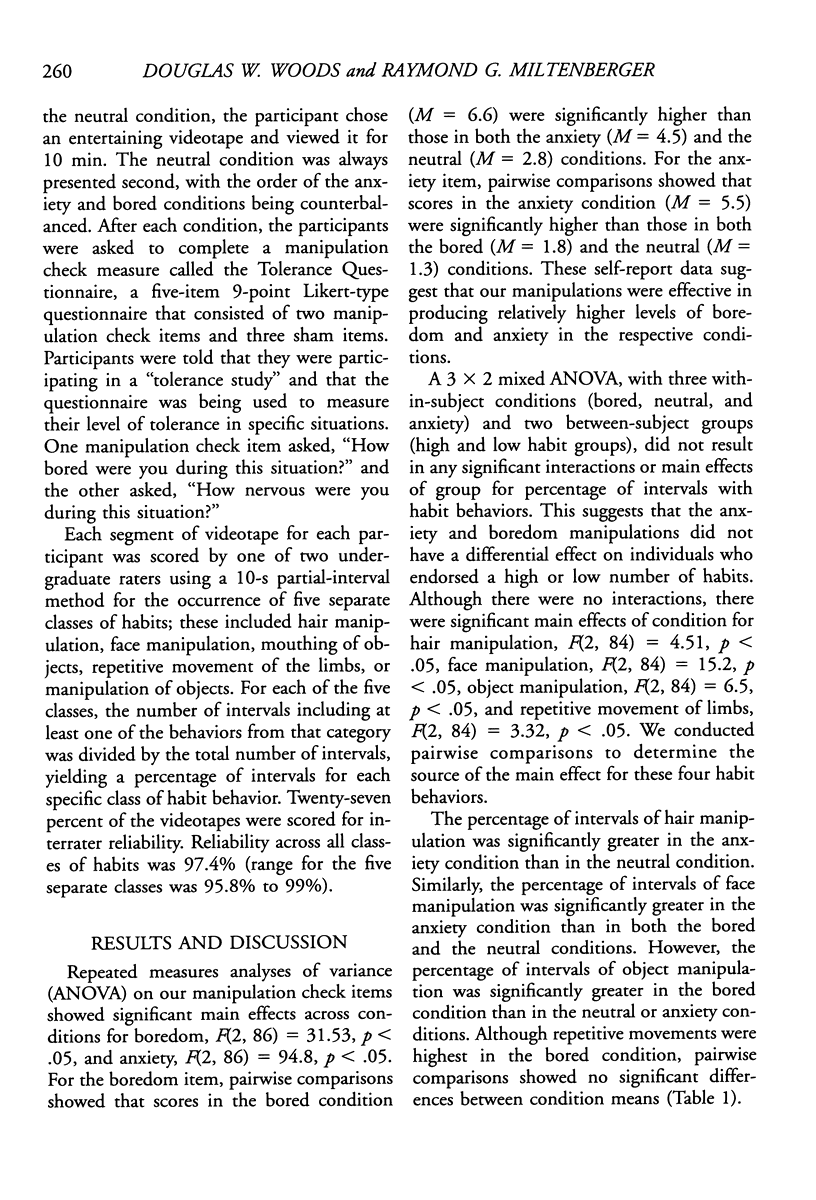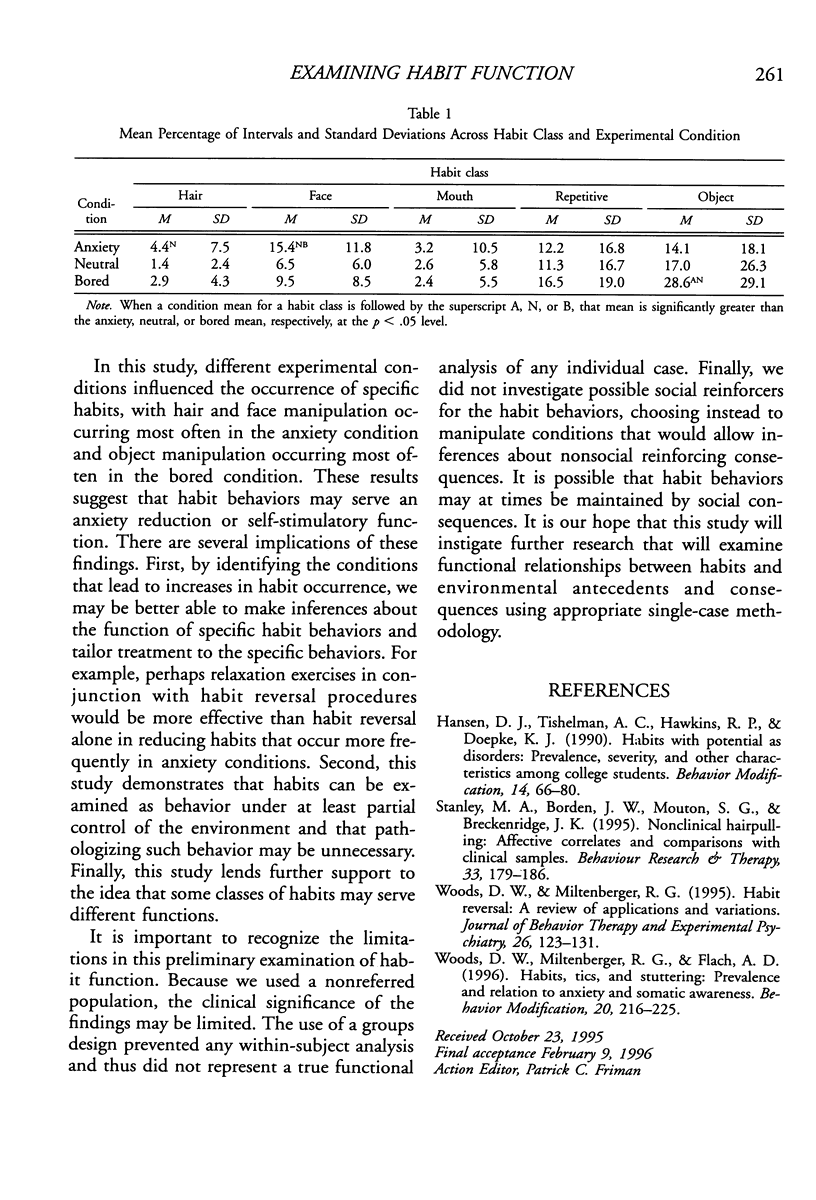Abstract
In this study, 44 individual were exposed to three conditions (anxiety, bored, and neutral) while being covertly videotaped. The videotapes were then scored for the occurrence of five classes of habits including hair, face, and object manipulation; object mouthing; and repetitive movement of the limbs. Results showed that hair and face manipulation increased during the anxiety condition, whereas object manipulation increased in the bored condition. The implications of this research are discussed.
Full text
PDF


Selected References
These references are in PubMed. This may not be the complete list of references from this article.
- Hansen D. J., Tishelman A. C., Hawkins R. P., Doepke K. J. Habits with potential as disorders. Prevalence, severity, and other characteristics among college students. Behav Modif. 1990 Jan;14(1):66–80. doi: 10.1177/01454455900141005. [DOI] [PubMed] [Google Scholar]
- Stanley M. A., Borden J. W., Mouton S. G., Breckenridge J. K. Nonclinical hair-pulling: affective correlates and comparison with clinical samples. Behav Res Ther. 1995 Feb;33(2):179–186. doi: 10.1016/0005-7967(94)e0018-e. [DOI] [PubMed] [Google Scholar]
- Woods D. W., Miltenberger R. G., Flach A. D. Habits, tics, and stuttering. Prevalence and relation to anxiety and somatic awareness. Behav Modif. 1996 Apr;20(2):216–225. doi: 10.1177/01454455960202005. [DOI] [PubMed] [Google Scholar]
- Woods D. W., Miltenberger R. G. Habit reversal: a review of applications and variations. J Behav Ther Exp Psychiatry. 1995 Jun;26(2):123–131. doi: 10.1016/0005-7916(95)00009-o. [DOI] [PubMed] [Google Scholar]


